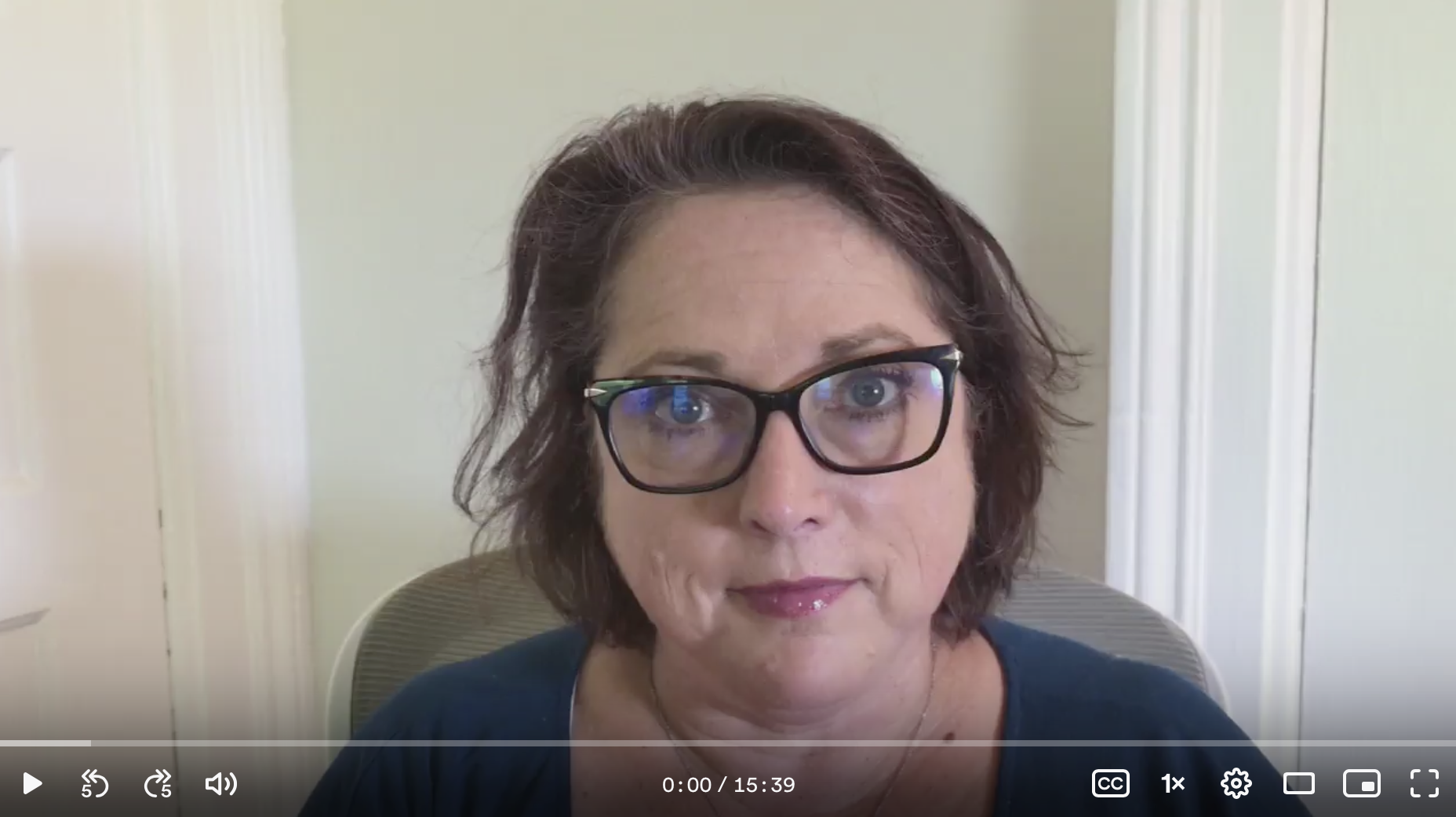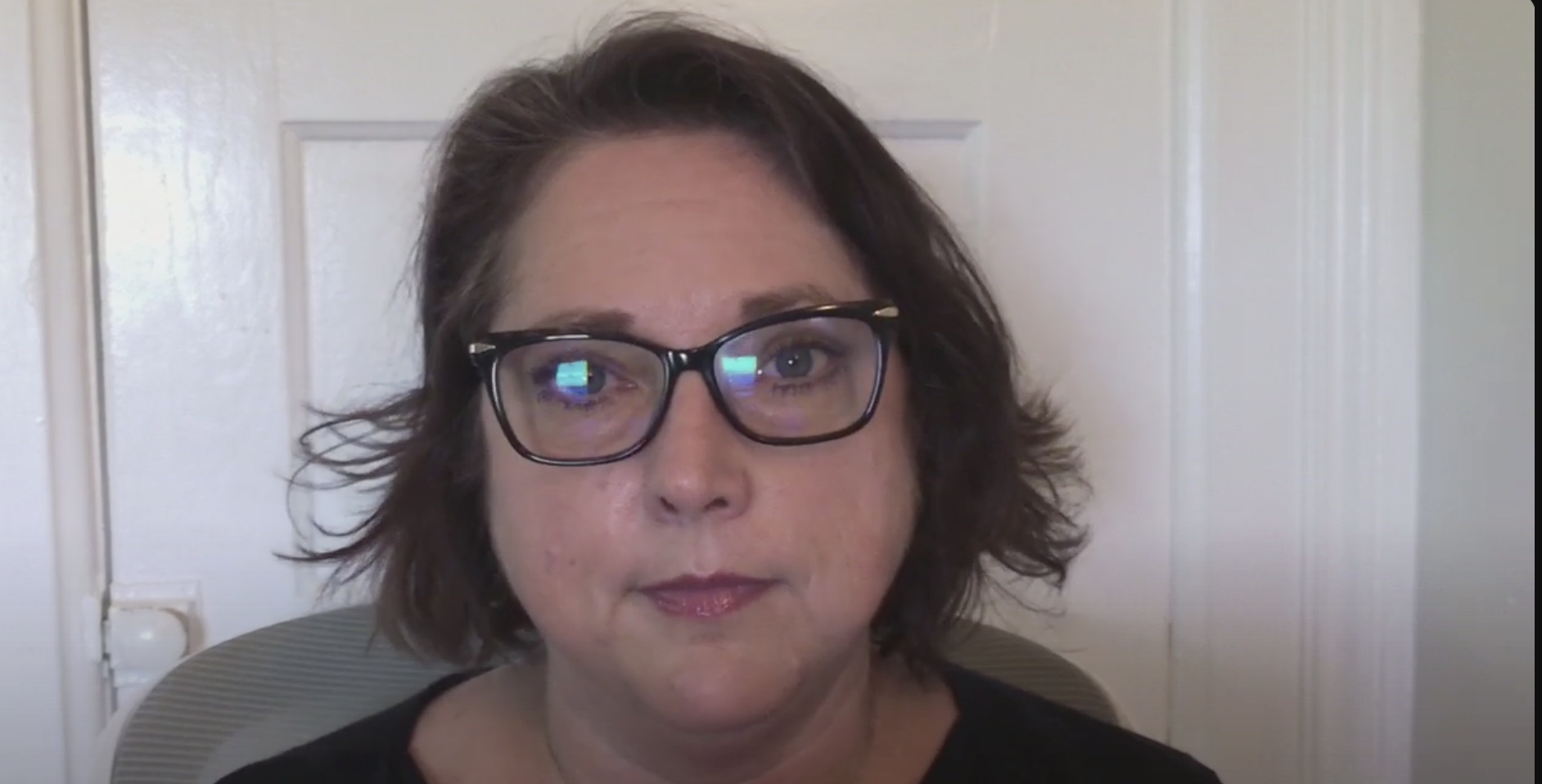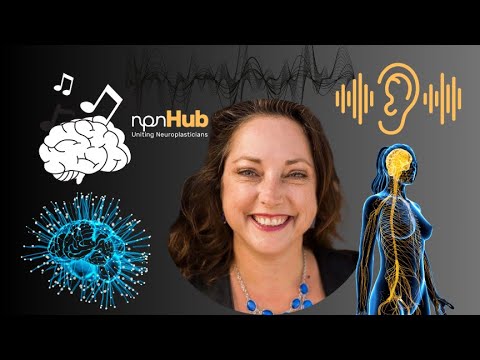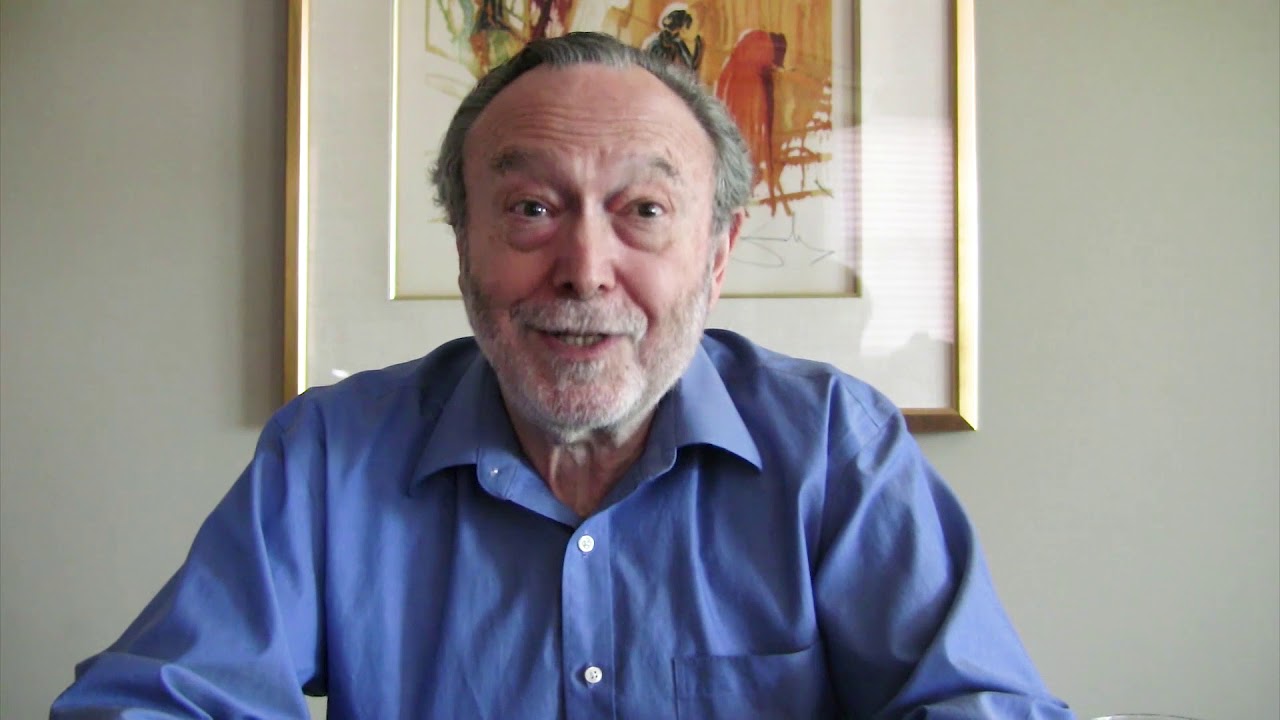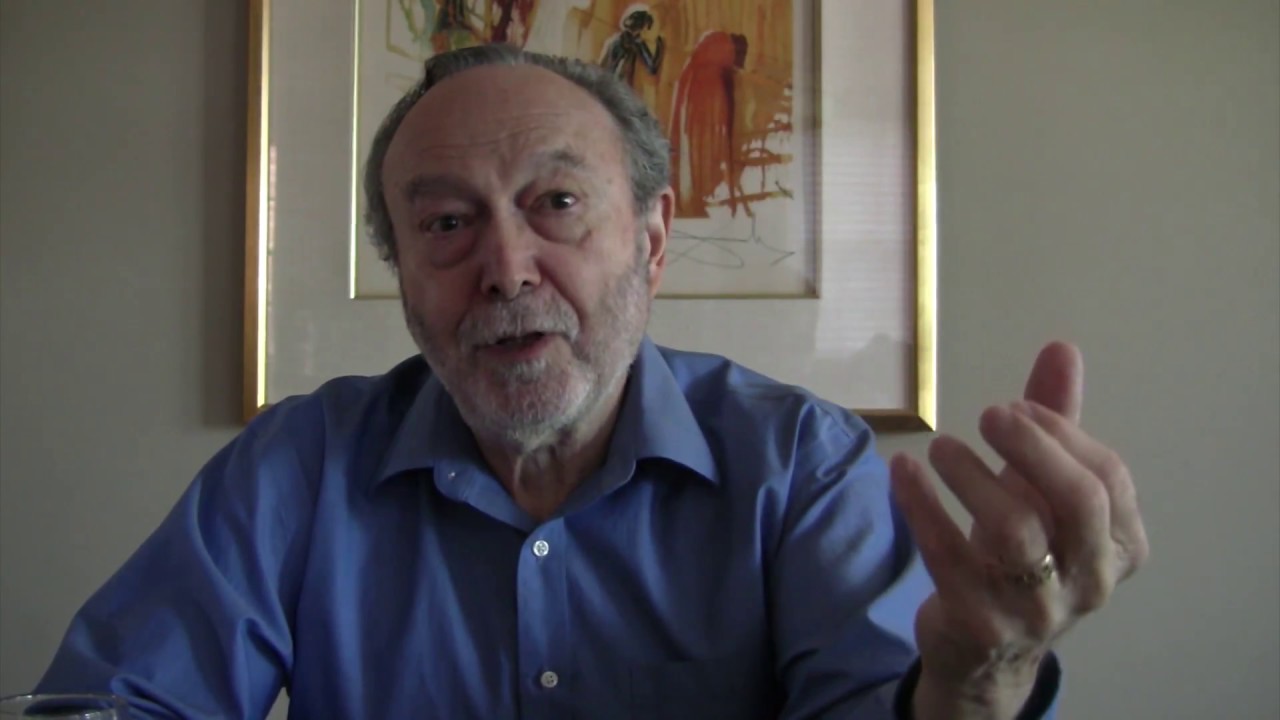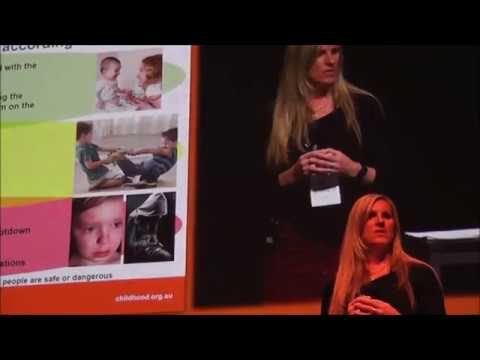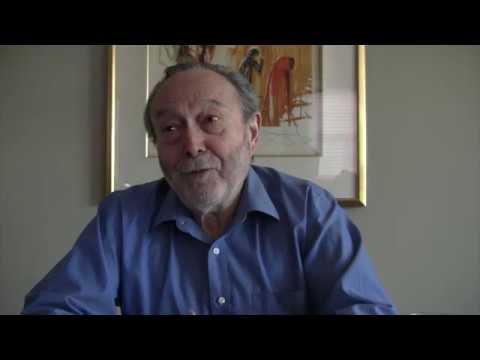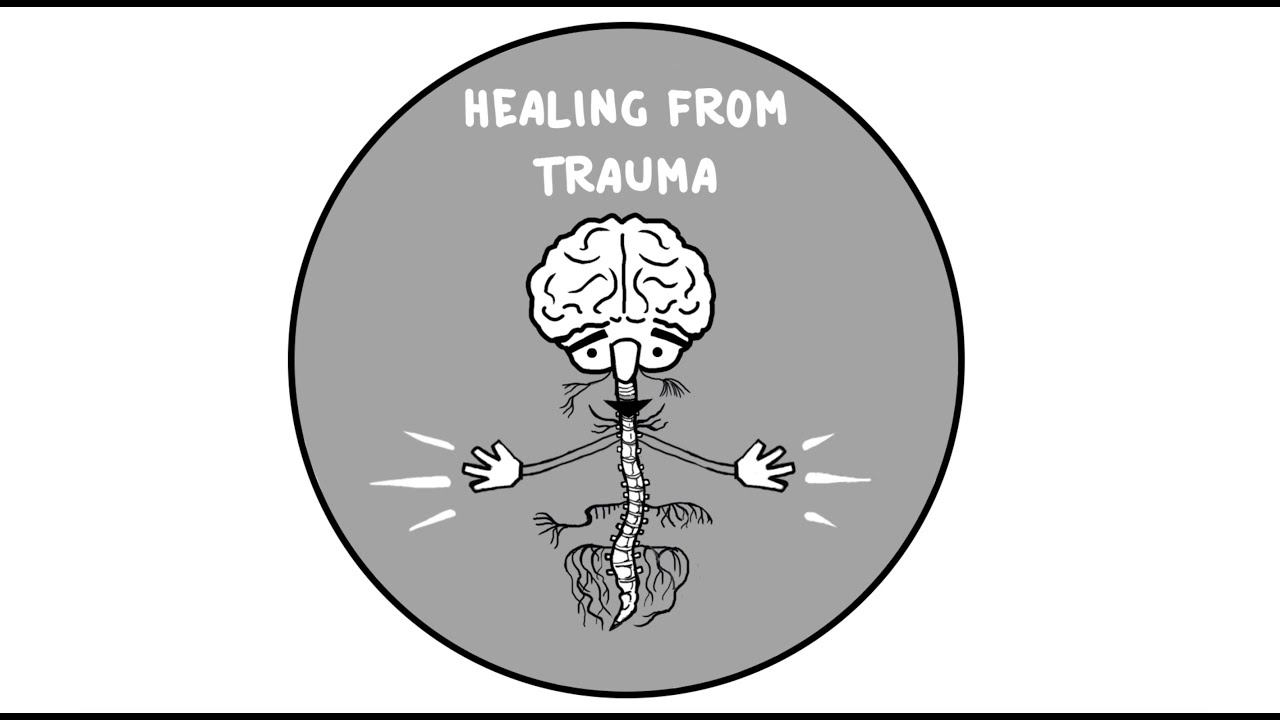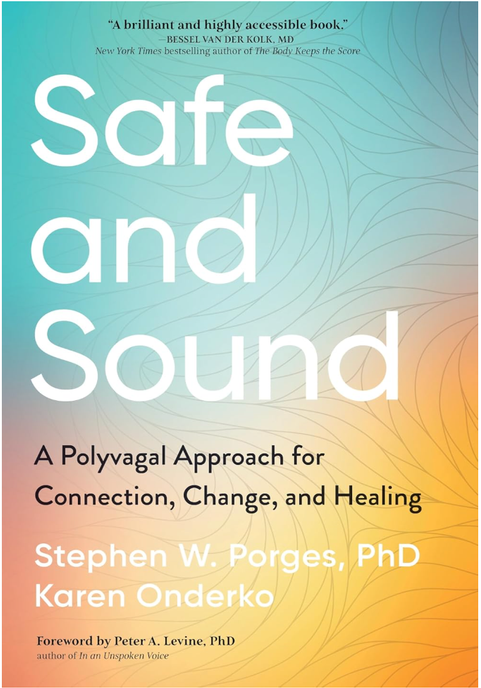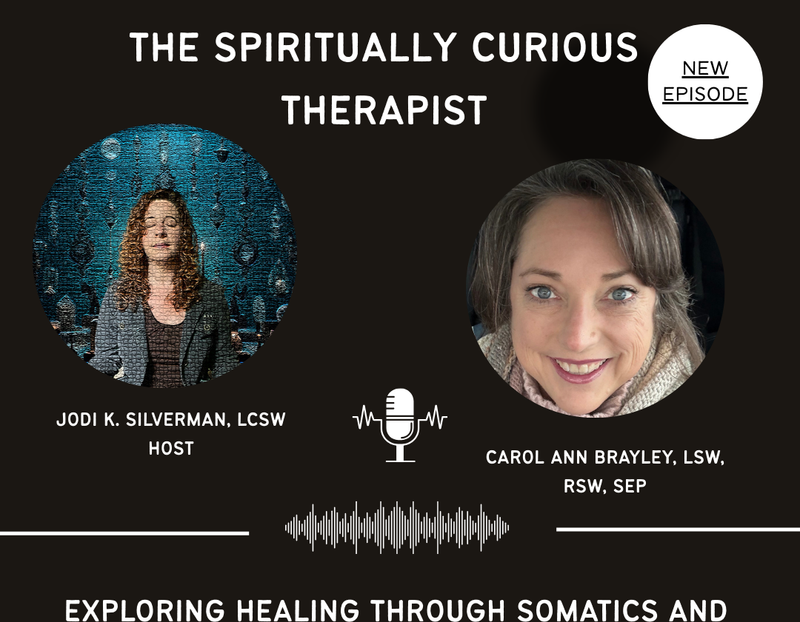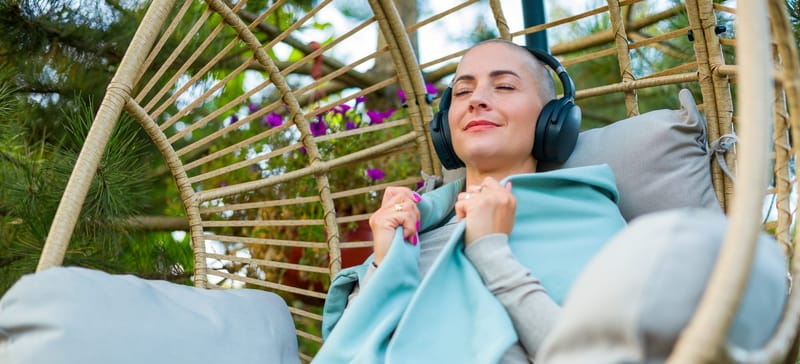Safe & Sound Protocol
Coaching, Consultations & Advanced SSP Training
Turn to the provider that providers turn to...
About
Healing happens when we listen to what our body knows. With SSP, RRP, Brainspotting, Somatic Experiencing & intuition, I help both clients and providers find clarity, calm, and flow.

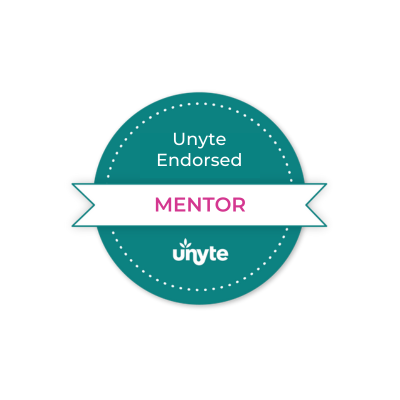

I’m Carol Ann Brayley, MSW, RSW, SEP — a Canadian neurodivergent psychotherapist and Somatic Experiencing® Practitioner with over 30 years of clinical experience. I specialize in helping neurodiverse families and highly sensitive, complex individuals become more regulated, feel safer in the world, and able to fully embrace their gifts—with fewer meltdowns and more connection.
I’m fully certified by Unyte in the Safe & Sound Protocol (SSP), Rest & Restore Protocol (RRP), and iLs Focus, and I’m an officially approved Unyte Mentor for other providers.
In the summer of 2024, I was deeply honoured to support Dr. Stephen Porges, Anthony Gorry, and Unyte in the pilot study for the brand-new Rest & Restore Protocol (RRP).
Whether you’re:
• Seeking SSP or RRP for yourself or your child,
• Already working with a provider but want extra support or a second opinion,
• Or you’re a provider yourself seeking consultation, advanced guidance, or tools to enhance your practice…
I’m here to help.
Why work with me?
With SSP or RRP, the provider you choose really matters. These protocols aren’t one-size-fits-all. I’m known for helping even the most sensitive, complex, or misunderstood clients. In fact, Unyte has often referred both clients and providers to me when things feel too complex, when someone needs advanced support, or when things have gone wrong with a different provider.
I’ve helped several hundred people - from 2-78 years old - experience life-changing results with SSP — including those for whom SSP previously didn’t work or even made things worse.
Along the way, I’ve made some unique discoveries that are now helping other providers and clients worldwide, including:
• The Mini Reset – a simple but powerful way to quickly settle dysregulation, often in real time
• The ability to microdose SSP – delivering it in extremely small, gentle increments for those with extreme sensitivity or complex histories
Too often, SSP is delivered too quickly, especially by providers who haven’t worked with complex systems.
When SSP is titrated gently and responsively, SSP becomes far more effective, more regulating, and far less overwhelming — even for those with extensive trauma or health concerns.
My work has been featured by Unyte:
• November 2022 – Featured SSP provider in a live Unyte-iLs webinar on offering SSP safely and gently to complex clients
• September 2024 – Provider Spotlight speaker for the free recorded Unyte webinar: How Anxiety Manifests in the Nervous System
• October 2024 – Invited expert panelist at a live event in Toronto, interviewed by Jan Winhall, a leading voice in trauma and nervous system work.
I have been interviewed on The Spiritually Curious Therapist about my work.
I walk this path, too.
I’m not just a practitioner — I’m a neurodivergent, highly sensitive human with complex health concerns. I’ve also raised two amazing neurodivergent kids to adulthood.
In just our immediate family, we’ve navigated:
• LGBQT+ related concerns 🌈
• Autism, ADHD (including slow cognitive type), anxiety, and depression
• Selective mutism, Tourette’s syndrome, misophonia, and auditory processing issues
• Brain injury, fibromyalgia, MTHFR mutations, MCAS, autoimmune conditions, and more
I get it. Deeply. Intuitively. Quickly. You won’t have to explain everything — I’ll already be attuned to what’s going on, often before words are even needed.
What it feels like to work with me:
• Relief, because you won’t have to educate your provider or prove your complexity
• Respect, because I see neurodivergence as a gift to be supported, not a problem to fix
• Creativity, because I find flexible, personalized ways to meet your needs
• Ease, because I can track subtle cues of dysregulation and adjust the process early
• Confidence, because I hold the bigger picture so you can simply show up and heal
And when you’re ready to go further, I offer NeurOptimal Neurofeedback and iLs Focus as natural next steps — all with the same level of care, insight, and customization.
I offer flat rate independent listening packages for SSP or RRP.
I offer flexible payment plans in either CDN or US currency.
However, if you want a more fully coregulated experience of SSP or RRP, I also have a pay-as-you-go option where we can some even deeper work with me present for all or most of listening, while we also weave in together elements of Brainspotting, Somatic Experiencing, and parts work.
A note about pricing and quality of care
Some low-cost SSP providers offer little support, and I’ve worked with clients who were left dysregulated and sometimes even abandoned when things got hard. This often creates unexpected added expense requiring additional help from other providers, to get things settled again.
With me, you’re not just getting SSP—you’re getting expert support, real-time responsiveness, trauma-informed care, and a compassionate partner who knows how to handle complexity safely. I’ve built my practice around helping people feel deeply supported, seen, and safe throughout the entire journey.
“I thought I was saving money with a low-cost provider. But when things started to unravel, they disappeared—and I was left to pick up the pieces. Finding Carol Ann changed everything. She knew exactly how to help, and for the first time, I felt safe, seen, and supported.”
— Former SSP client, now thriving
Are you a provider?
Whether you’re new to SSP or highly experienced but feeling stuck with complex cases, I offer a range of supports to help you grow in confidence, skill, and ease:
• Individual & group SSP/RRP consultations
• Advanced SSP training, including the option to have your own SSP process expertly guided by me with teaching woven in at no extra cost
• Somatic Experiencing® skills group – Build your nervous system literacy and learn to track physiology more deeply in yourself and others
• Brainspotting sessions – Personalized support to help you regulate your own nervous system, process stuck points or past difficult experiences with SSP/RRP, and work through core beliefs or unresolved trauma that may be quietly limiting your success and confidence as a provider.
• Marketing support – Strategic, heart-centered help to attract more ideal clients, get clearer on your niche, and make your practice more sustainable
• Customizable SSP Practice Forms
• A Deluxe SSP Provider Practice Bundle with substantial savings on my advanced training, consultations, and more
Are you a Neurodivergent Woman?
Whether you are dealing with ADHD, autism, giftedness or other forms of neurodivergence - you are welcome to join my supportive Online Neurodivergent Women's Group.
Your nervous system is unique. Your path should be too. Let’s discover it together.
Process
A gentle, supportive way to begin your SSP or RRP journey—on your own, but not alone. This mostly flat-rate package includes one online session to help you start with confidence, followed by email support throughout the process. Ideal for those wanting a flexible, self-paced option with expert guidance - without the need for ongoing sessions.
Please Read Before Beginning
With either Safe and Sound Protocol (SSP) or Rest & Restore Protocol (RRP), it’s possible that some symptoms may temporarily worsen before improving—especially if the nervous system becomes overwhelmed. We do everything we can to prevent this by carefully observing how your system is responding, pausing or slowing the process when needed to keep it gentle and safe.
Committing to staying in touch with me throughout the listening process is key in order to keep either process as gentle as possible, and to allow for best possible improvements.
⏳ Choosing the Right Time to Begin
Ideally, SSP or RRP should be started when you (or your child) are not already at your limit. If you’re facing major stressors or upcoming events that could be overwhelming, it might be either best to wait for those events to pass, or we may be able to proceed with a plan to take special care.
It is always wise to discuss timing with me if you’re unsure.
SSP and RRP are most effective when the nervous system feels safe. If there is significant conflict at home, or someone in the household feels threatening or destabilizing to the listener, SSP or RRP may be less effective. Please reach out if you’re unsure whether SSP is the right next step right now, or if you’d like guidance on where to start instead.
Whenever possible, choose a time when you can slow down a little—just in case the process gets bumpy and you need space to integrate.
🦷 Medical & Safety Considerations
Please avoid starting SSP or RRP if:
• You are about to undergo invasive dental work (e.g., root canal or extraction)
• You’ve had a recent head injury
• You have a seizure disorder and have not been seizure-free for at least one year
If you have any significant medical issues or a history of bipolar depression, please let me know in advance so I can arrange a medical consult if needed.
🎧 Getting Started with SSP or RRP
What is described below is the flat rate process for either SSP or RRP.
If you would prefer to have me present for more, most, or all of the listening process, this is possible as well. If SSP or RRP is combined with therapy sessions, there is often no additional fee or either process. Combining or supporting either RRP, SSP or both with therapy with me is an option available to those aged 18 and over.
Independent Listening Delivery Format
• For teens and adults we typically begin with an online session where I observe the start of listening.
• For children 12 and under, I usually meet with the parent to learn more about the child and co-create a plan for how to begin.
After our listening session, communication is usually done via email for the rest of the process —unless you are choosing to combine RRP or SSP with therapy with me.
🤝 Coregulation During Listening
SSP is most effective in the context of felt safety. Ideally, the listener should have a calm, trusted support person present during listening—someone who can offer soft eye contact, a gentle smile, or a reassuring presence when needed. This is most often a friend or family member. Sometimes those seeing a therapist or bodyworker regularly may choose to listen with them.
This social engagement supports the nervous system in integrating the SSP experience. While some people begin to feel more socially connected weeks after completing SSP, others begin experiencing this shift during listening.
If you don’t have someone to be present with you, SSP or RRP may still be possible—just reach out to discuss alternative support options.
📩 Ongoing Monitoring & Support
Throughout the SSP and RRP process, regular email check-ins are essential. Ideally, you’ll check in every day or every few days with updates on changes in areas such as:
• Sleep
• Mood
• Focus
• Energy levels
• Digestion
• Sound sensitivities
• Pain levels
We will basically play detective together, watching for cues as to how your nervous system is responding. I also will teach you how to recognize how much SSP your body wants at each and every step of the way.
⚠️ If you don’t stay in touch or don’t follow your provider’s guidance, SSP or RRP may become less effective—or even uncomfortable. Staying connected is key!
📱 Devices & Technology
SSP is delivered through the Unyte app, which works on:
• Smartphones or tablets
• Newer MacBooks with the M1 chip
• Some Chromebooks
🚫 Desktop or standard laptops will not work.
If we’re doing an online session to start for your own listening, you’ll need a second device for the video call (Zoom, etc.) while the app plays SSP music on your primary device.
Please download the app and test your headphone connection before our session. If you haven’t received your app invitation by the day before our meeting, please contact me.
🎧 Headphone Requirements for SSP
You’ll need a high-quality pair of over-the-ear headphones for SSP. The requirements:
• No earbuds for SSP
• No noise-cancelling (unless it can be turned off)
• No bass enhancement
• Must fit fully over the ears with padded ear cups
• Speakers can be used in some situations, please ask me about this
🎧 Headphone Requirements for RRP
• Any good quality speakers, headphones or earbuds are fine for RRP
• Please avoid using phone or laptop speakers
If your headphones aren’t Bluetooth, make sure they can connect to your device. Some setups may require an adapter.
🔊 Recommended headphone models for SSP:
OneOdio A70 or A71 are headphones that have been specifically vetted by Unyte as being great inexpensive options for SSP.
If you or your child has difficulty wearing headphones, don’t worry—we have other alternatives. Please contact me to discuss.
💬 Booking & Availability
Due to high demand, I’m not always available to take on new clients directly. You can check my current availability and book online here to see if availability is showing.
If my calendar is full or if you prefer, you may also choose to work with one of my SSP Yoda Informed Associates—highly trained, compassionate providers who often have availability sooner and offer a comparable quality of care at a slightly lower rate.
👉 Click here to view SSP package pricing options
SSP
I’ve supported several hundred people worldwide from ages 2-78 years old with SSP—always gently, safely, and with deep respect for each unique nervous system. Clients have included those with anxiety, autism, giftedness, Tourettes, brain injury, misophonia, Lyme, mold exposure, ADHD, PTSD, sensory issues, tinnitus, psychogenic seizures, long COVID, chronic illness, neurodivergence, LGBTQ+ concerns and more. No two journeys are alike, and that’s exactly how I approach this work.
The Safe & Sound Protocol is a 5 hour auditory intervention, created by Stephen Porges, the founder of polyvagal theory.
SSP music has been specially filtered in a way that causes the vagus nerve to become stimulated during listening. SSP music is basically delivering "cues of safety" to the nervous system.
As long as this listening occurs in the context of someone feeling safe and supported, this introduces a calmer, parasympathetic state, and allows someone whose brain may have been constantly scanning for danger to no longer enhance and hyper focus upon lower frequency sounds - the sounds of danger - but instead to shift focus to higher frequency sounds - the sounds of human speech.
SSP listening also helps to improve the functioning of the middle ear muscles which ideally then become better able to filter out background noise to hear the sound of speech, and others sounds of safety.
This changes all come together for example to allow someone to be able to more easily - and often effortlessly, without "trying" or even being aware that they are doing so - to filter out sounds that they previously would have been distressed by.
Areas of Improvement Potentially Arising 2-7 weeks after completion of SSP Core
Reduced anxiety, especially social anxiety
Improved assertiveness and self protectiveness
Increased displays of affection-seeking affection-expressive contact
Increased facial flexibility and expressiveness
Increased body flexibility
Reduced chronic pain
Change in throat tension/sound of voice
Improved eye contact
Reduced repetitive motions and restlessness
Increased feelings of calmness
Hearing changes/reductions in sensory hypersensitivities
Finding transitions much easier
Speech and language improvements
Reduced sensitivity to food tastes and textures/less "picky eating"
Improved reciprocal communication
Thoughts and behavior have more purposeful flow
Improved comprehension
Easier to follow directions
Improved processing speed
Improved organization
Improved dexterity
More active participant in classroom, able to tolerate and overcome challenges
Improved visual focus/tracking
More able to put words to feeling
Able to remain regulated during face to face communication
Improved self-awareness (particularly of emotions),
Improved communication about self (again particularly about emotions),
Decreased panic, fears and phobias
Improved cardiac function
Improvement in breathing patterns.
Able to tolerate busy environments
Increased sense of humor
Improved ability to read social cues
Less easily stressed
Improved digestion
Improved bladder control
Hormonal shifts for women
Concerns related to long covid.
Click here to learn about the differences between SSP, RRP, and iLs
Click here to learn more about what the SSP process with us looks like
Click here to view SSP pricing package options
View independent listening SSP or RRP payment plan options in CDN currency OR in US currency
Click here to watch some videos about SSP
Click here to book in to start SSP with an SSP Yoda Informed associate.
RRP
Rest & Restore Protocol (RRP) invites your system to soften, settle, and come home to itself. Like being gently rocked from within, it nurtures calm, safety, and connection to your inner world—supporting sleep, digestion, mood, and regulation. While RRP beautifully complements SSP, it can also stand alone as a powerful path to healing and deep embodied presence.

The Rest & Restore Protocol (RRP) is a newer offering developed by Dr. Stephen Porges, the founder of Polyvagal Theory and the Safe and Sound Protocol (SSP), together with a composer, Anthony Gorry. I had the honour of helping with the RRP pilot study in the summer of 2024, and I continue to explore the powerful shifts this protocol can offer—especially when carefully titrated for sensitive and complex systems.
RRP is designed to support deep regulation by helping the body rest, settle, and repair. While SSP is more oriented toward connection with others, RRP gently invites us inward—fostering connection with ourselves.
Dr. Porges describes SSP as being like a mother’s lullaby—encouraging us to reach outward, to co-regulate and connect with others.
In contrast, he describes RRP as being like a mother’s gentle rocking—helping us soften inward, and more fully land in our own body.
In the pilot study, the most commonly reported improvements included:
• Reduced anxiety
• Improved mood
• Better digestion
• Deeper, more restful sleep
In my own work with RRP clients, I’ve also seen improvements with:
• Chronic pain
• Auditory processing
• Executive functioning (often dramatically)
• Feeling calmer and more regulated
• Natural, effortless shifts toward healthier choices (like eating and exercise)
People often describe a quiet inner calm—a sense of finally arriving home in their body.
As with SSP, the delivery of RRP must be tailored to the individual nervous system. It can be gentle, yet profound, and can be deeply nourishing, as long as it is carefully titrated.
Click here to learn about the differences between SSP, RRP and iLs.
Click here to learn more about what the Independent Listening RRP process with us looks like
Click here to view RRP pricing package options
View independent listening SSP or RRP payment plan options in CDN currency OR in US currency
Click here to book in to start RRP
Pricing
For trauma, neurodivergence, and complex systems, clinical precision and attunement make all the difference. Work with internationally recognized expert Carol Ann Brayley, MSW, RSW, SEP. Ask about family discounts & discounts on subsequent rounds of SSP. Covered under extended health plans that cover social workers in Ontario
Brainspotting
When insight isn’t enough, Brainspotting helps you finally feel the shift. This gentle, body-based therapy reaches the places talk therapy can’t - supporting deep healing for trauma, anxiety, and overwhelm. Especially helpful for sensitive and neurodivergent nervous systems.

Talk therapy helps us understand our problems - but understanding isn’t the same as healing.
Many of my clients have done years of talk therapy. They’ve learned tools. They’ve gained insight. But they still feel stuck. That’s because traditional therapy often works from the top down, trying to reason with emotional wounds stored far deeper in the body and brain.
Brainspotting is different.
It works from the bottom up - directly with the nervous system - to release trauma, anxiety, and overwhelm at the root. Whether you’re navigating complex trauma, chronic stress, or simply know something hasn’t shifted yet, Brainspotting can help. The best part? While talking is always welcome in Brainspotting, it isn’t required. For those who find speaking difficult or simply prefer not to, this approach can support deep healing — often with very few words at all.
What Is Brainspotting?
Brainspotting is a gentle, brain-body-based therapy that helps uncover and release what talk therapy can’t always reach. It uses eye position to access specific areas in the brain where emotional or somatic pain is being stored.
By attuning to the body and staying with the “brainspot,” your system can process old material naturally - without needing to relive or explain everything.
It’s effective for:
• Developmental or complex trauma
• Anxiety, panic, and freeze states
• Fears phobias and related concerns such as fear of speaking in certain contexts (selective mutism)
• Chronic pain, migraines, or tension
• Dissociation or shutdown
• Burnout or grief
• Neurodivergent overwhelm (e.g., PDA, sensory overload, masking fatigue)
• When talk therapy has helped a little — but not enough
• Physical symptoms with an emotional component (e.g., pain, tension, migraines, misophonia, concussion recovery)
Brainspotting for Neurodivergent and Highly Sensitive Clients
As someone who is neurodivergent myself, I understand how overwhelming life can be when your nervous system is already working overtime.
Brainspotting is an especially good fit for autistic, ADHD, or otherwise neurodivergent clients - because it doesn’t require you to “perform” or force insights. It allows your system to process in the background, without needing to verbalize every feeling or memory. Sessions are paced gently, with deep respect for sensory needs, pacing, and what feels safe. You will be in the driver's seat.
Combining Brainspotting with Somatic Experiencing, SSP & RRP
In some cases, Brainspotting is even more effective when combined with other nervous system-based approaches like Somatic Experiencing, the Safe and Sound Protocol (SSP) or the Rest & Restore Protocol (RRP). These protocols help regulate the nervous system and build capacity - making it easier to access and integrate deeper healing work.
Combining these approaches when useful can help people to “go in” more effectively, with less reactivity and more ease. And for highly sensitive or complex clients, I may recommend a carefully layered approach that we build together.
What to Expect in a Session
Sessions are intuitive, client-led, and deeply attuned. You don’t have to know where to begin — your body already knows. We simply listen together.
We’ll:
• Tune into an issue or sensation you’d like to shift
• Identify one or multiple brainspots (linked to precise eye positions)
• Stay with and/or repeatedly that spot, with curiosity and presence
• Allow your nervous system to process what it’s ready to release
• If desired you can listen to Brainspotting music during your session through earbuds or headphones. You can access Brainspotting music from places like Spotify or YouTube.
No need to retell your trauma. No pressure to push. We move at your pace, and I’ll be right there with you the whole time.
Online Brainspotting Sessions
All sessions are offered online - but don’t mistake virtual for distant. My clients often tell me they feel deeply seen and supported, even more so from the comfort of their own space.
I work with adults and teens (16+) and if you'd like to we can integrate Somatic Experiencing, Brainspotting, SSP, RRP, and intuitive guidance to support healing that’s truly individualized.
Start Healing What Talk Therapy Couldn’t Reach
If you’re ready for something deeper - something that actually creates change - Brainspotting may be the support your nervous system has been waiting for.
Sessions are $200 CDN - approximately $146 US.
👉 Book a session or contact me to explore whether this approach is a fit for you.
Somatic Experiencing
What if your body already knew how to heal - it just needed the right support? Somatic Experiencing helps you gently unwind trauma, anxiety, and overwhelm at the nervous system level.

When your nervous system has been stuck in survival mode, healing doesn’t happen through words alone.
Somatic Experiencing (SE) is a gentle, body-based approach that helps you reconnect with yourself, release stored survival energy, and finally start to feel safe - from the inside out.
Whether you’re carrying the imprint of trauma, navigating chronic stress or burnout, or simply feeling disconnected from your body, SE supports deep, lasting shifts by working directly with your physiology.
What Is Somatic Experiencing?
Developed by Dr. Peter Levine, Somatic Experiencing is based on the understanding that trauma is held in the body - not just the mind. Even when a threatening situation is long over, your nervous system may still be stuck in patterns of fight, flight, freeze, or shutdown.
SE helps your body complete the responses it couldn’t at the time, allowing your system to move out of survival mode and into a felt sense of safety, regulation, and connection.
It doesn’t require you to retell your story. In fact, we don’t need to focus on the story at all. Instead, we follow the body’s cues and gently build capacity for what feels overwhelming - one step at a time.
What SE Can Help With
Somatic Experiencing can be profoundly helpful for:
• Complex trauma or developmental trauma
• Anxiety, chronic stress, or burnout
• Dissociation, freeze, or shutdown
• Medical trauma or chronic health issues
• Pain, tension, or other body-based symptoms
• Sleep challenges and digestion issues
• Sensory overload and neurodivergent nervous systems
• Feeling numb, disconnected, or “stuck” in your healing
Gentle, Attuned, and Customized to You
No two nervous systems are the same. That’s why SE sessions with me are never formulaic. We’ll follow your body’s lead, go at your pace, and use your unique responses as a guide.
Sessions may include:
• Tuning into internal sensations with support
• Noticing subtle shifts and natural cycles of regulation
• Helping your system safely complete stuck responses
• Grounding tools that actually work with your physiology
• Integration of other modalities like SSP, RRP, Brainspotting, or parts work when helpful
And because I work intuitively, we may weave in gentle insights, somatic symbolism, or unexpected threads of wisdom — all grounded in deep respect for your system’s timing and needs.
Online Sessions
Although SE is a somatic modality, it translates beautifully to online sessions. I’ll guide you in reconnecting with your body in a safe, supported way — whether you’re sitting at your desk, wrapped in a blanket, or wherever you are most comfortable.
Many of my clients say they feel deeply connected and regulated even through the screen. If anything, being in a familiar environment can make it easier for the nervous system to settle and explore.
A Different Kind of Therapy - One That Actually Shifts Things
If you’ve tried talk therapy and gained insight but haven’t felt real change, Somatic Experiencing may offer a new path forward — one that listens to the body, honors your pace, and supports your system in doing what it was always meant to do: heal.
Sessions are $200 CDN (approximately $159 US).
👉 Book a session or get in touch to see if Somatic Experiencing feels like a fit for your next step.
Therapy
Support for healing, growth, and everything in between. Whether you’re navigating something hard or reaching for something more, sessions are intuitive, body-based, and tailored to your unique nervous system. Covered under extended health plans that include registered social workers in Ontario.

Many people first find me through my work with the Safe and Sound Protocol (SSP). But therapy with me is about so much more than listening to music. It’s about listening to you - your body, your story, your nervous system, and your inner knowing.
As a clinical social worker with extensive training in body-based and neuroscience-informed therapies, I bring together a wide range of approaches to meet you exactly where you are. I’m internationally recognized for my work with SSP and RRP, and also trained in Somatic Experiencing®, EMDR, Brainspotting, Integral Somatic Psychology (ISP), iLs, NeurOptimal® Neurofeedback, and parts work. I often incorporate mindfulness, intuitive insight, and nervous system attunement to guide the work in powerful and unexpected ways.
If you’re seeking therapy, we’ll start by exploring what’s most important to you and what feels safe and possible right now. From there, we’ll co-create a path forward using whatever combination of modalities feels most aligned for your healing.
Therapy with Me Offers Many Options:
• Somatic Experiencing® to gently release stored stress and trauma through the body
• Brainspotting and EMDR to access and resolve deeper emotional wounds
• Parts Work to meet the younger, protective, or reactive parts of you with compassion
• Integral Somatic Psychology (ISP) to amplify embodiment and emotional integration
• Safe and Sound Protocol (SSP) and Rest & Restore Protocol (RRP) for profound nervous system regulation
• iLs Focus and Neurofeedback (NeurOptimal®) to support cognitive, emotional, and sensory processing
• Mindfulness and intuitive guidance to gently uncover what’s ready to heal
• A grounded, compassionate relationship rooted in safety, curiosity, and respect
You can listen to me talk about how I approach my work with clients in this interview on The Spiritually Curious Therapist podcast.
I’m neurodivergent and highly sensitive myself, with a history of complex trauma. I know how hard things can feel sometimes, from both sides of the therapy relationship. And I know the courage it takes to reach for something different.
If you’ve had therapy before and felt unseen, unsupported, or overwhelmed… this might feel like a very different experience. I work online or by phone - but that doesn’t mean distant. I will be right there with you.
You don’t have to do this alone. Let’s find what your nervous system needs—together.
Ready to begin? Click here to book your first appointment.
Team
All SSP Yoda Informed Associates benefit from direct, ongoing access to my expertise—and I benefit from theirs as well. We each bring our unique strengths to the table and offer SSP internationally at equivalent rates. I am based in Ontario, Canada, and charge in Canadian dollars, while Raizy, Lara and Emily are based in the U.S. and charge in the equivalent U.S. currency.
Carol Ann Brayley, MSW, RSW, SEP
SSP Yoda
From the moment I first encountered SSP I became very passionate about it. I learned with SSP very rapidly and lately I feel like I am coming to new understandings about SSP on an almost daily basis, that I believe may at times help to increase its effectiveness.
Raizy Yormark, MSW, LSW, CCC-SLP
SSP Yoda Associate
Raizy is a very welcome addition to the SSP Yoda team. Raizy brings a wealth of experience and unique skill set as someone who is trained as both a trauma therapist and as a speech and language pathologist. She specializes in working with highly sensitive people and those with complex trauma.
Lara Wrigley, Psy D
SSP Yoda Associate
Dr. Lara Wrigley is a licensed clinical psychologist with over 30 years of clinical experience working with a broad range of clients at all phases of the life span. She utilizes an integrative model in her approach that includes a focus on relational health, trauma and nervous system regulation. As a member of PSYPACT, she is able to offer insurance reimbursable psychotherapy in most states within the U.S.
Emily Perraut, MA, LLP, CCTP
SSP Yoda Associate
Emily is a licensed psychotherapist and experienced trauma therapist. who has been in practice since 2011. Emily is based near Detroit, Michigan. Emily and I have been friends for a few years, having first connected in online clinical trainings. I didn't know how interested Emily was in SSP until the first time we met in person when I was traveling through Michigan. Emily's intense curiosity and obvious excitement about SSP reminded me very much of myself when I first encountered it. Between my own overwhelming intuitive sense, Emily's already being an experienced, kind, caring and sensitive trauma therapist with a strong sense of social justice - I knew right away she'd make an incredible SSP provider and that I'd love to have her on my team.
Payment Plans
The following installment payment plans apply to remote delivery of either SSP OR RRP when working with Carol Ann Brayley. Installment plans with SSP Yoda Associate providers can be arranged with them, at their own discretion.

The plans below are for SSP or RRP remote delivery options. We will start with one online session in which I observe the start of listening. After that we stay in touch via email with you checking in with me often so that I can advise you on how to proceed.
SSP or RRP installment plan options in US currency
SSP or RRP installment plan options in CDN currency
APPTs
Please view the Team page to see which practitioner you feel most drawn towards working with.
When you are ready, please feel free to book yourself in with your preferred provider. Or, you can contact Carol Ann Brayley, MSW, RSW, SEP if you have any questions or would like to have a specific provider recommended for yourself or your family.
Providers
SSP & RRP don’t have to be confusing. With a mix of intuition and practical strategy, I’ll help you crack the code for your clients—and grow your confidence and your business along the way.
New!! Brainspotting for SSP & RRP Providers!
Brainspotting (BSP) is a powerful tool to help SSP providers like you process any subconscious barriers that may be getting in the way so that you can begin to truly flourish—personally, professionally, and financially. Interested in both Brainspotting and SSP or RRP consultation? In some situations it may make sense to combine them in the same meeting!
Learn MoreNew!! Expanding Your SSP Practice From the Inside Out
What if marketing your SSP practice could feel safer, easier — even healing? This unique training blends Brainspotting with nervous system wisdom to gently shift what’s been holding you back, so you can grow your practice with more ease and alignment.
Learn MoreTwo Day Online SSP Training: Elevate your SSP Practice to the Next Level
Now available as a fully bookmarked Zoom recording, this advanced training gives you practical, real-world insights you won’t find anywhere else. Your purchase also includes exclusive access to a private online community of SSP Yoda Informed Providers for continued learning and support. Click here to learn more and join us
Learn MoreRest & Restore Protocol (RRP) Info Webinar
Are you a new RRP provider who is excited to offer Rest & Restore Protocol (RRP) but unsure where to start? Feeling like you have more questions than answers? As a provider who assisted with the RRP pilot study, I’ve spent several months exploring how to deliver RRP effectively—especially for complex clients. In this webinar, I share what I’ve learned so you can feel clearer, more prepared, and ready to support your clients. You don’t have to figure it out alone—get the guidance you need and start offering RRP with confidence! 🎵💛
Learn MoreGroup SSP & RRP Consultations
Are you an SSP and/or RRP provider looking for ongoing support, professional guidance, and collaboration with like-minded practitioners? My online group consultation meetings are designed to help you deepen your understanding, refine your practice, and navigate challenges while working with clients using the Safe & Sound Protocol (SSP) & Rest & Restore Protocol (RRP). Please join us!
Learn MoreIndividual SSP & RRP Consultations
In individual sessions, I use both my clinical expertise and strong intuition to quickly zero in on what’s most helpful for you or your clients. We can even incorporate Brainspotting to deepen insight, resolve blocks, and boost your confidence. As an approved Unyte mentor and certified RRP provider, I bring unique perspectives drawn from my extensive experience with SSP and my evolving expertise with Rest & Restore Protocol.
Learn MoreDeluxe Package for SSP Providers
Ready to fast-track your SSP practice? Get a 20% discount when you bundle these high-impact supports: ✔️ Your own expertly guided SSP process with Carol Ann Brayley, MSW, RSW, SEP ✔️ Elevate Your SSP Practice to the Next Level training recording ✔️ All customizable SSP Practice Forms ✔️ Plus, enjoy 20% off all Group SSP Consultations for a full year
Learn MoreSSP Provider Shop
New! Editable, Customizable SSP Practice Forms Designed to support your confidence, clarity, and ease as a Safe & Sound Protocol provider. These professional, ready-to-use forms save you time and help you deliver SSP with greater consistency and confidence—whether you’re just starting out or refining your practice. Click here to explore the full bundle and some other great options as well.
Learn MoreRegulate & Restore: Somatic Experiencing® Skills Group for Provider Self-Care & Client Support
Enhance both your life and your practice with simple Somatic Experiencing (SE) orienting skills designed to support nervous system regulation and integration. Master practical techniques to cultivate grounding, co-regulation, and resilience—empowering you and your clients to experience better therapeutic outcomes and a greater sense of well-being.
Learn MoreEvents
NF
NeurOptimal neurofeedback is one of many fantastic options to follow SSP with, to allow further nervous system settling and integration. Fees often covered within the limits of your extended health plan. Free delivery available to many areas & significant discounts available. No hidden fees. Please enquire for details.
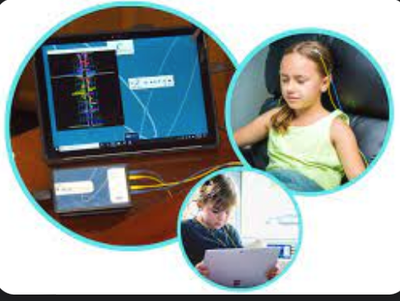
With NeurOptimal neurofeedback, our focus is upon restoring brain resilience and flexibility.
NeurOptimal is easy to use, safe and gentle. It does not require first having any kind of assessment, or complicated and expensive brain mapping as, with NeurOptimal, the brain is in charge.
During NeurOptimal sessions, no frequencies are sent to the brain. The system is on a tablet, and five sensors are attached to the scalp and ears.
The sensors monitor brain functioning. During sessions, music - or children's TV shows or movies, if desired - are playing through the tablet. When the sensors detect that the brain is about to shift from one state to another, there will be a little crackle or gap in the audio - kind of like a record "skip".
Because this pattern keeps happening over and over again, the brain begins to recognize it is being given feedback about itself.
It's kind of like if we had been doing yoga our whole life but we had never had a mirror in front us. Then one day a mirror appears and all at once we can see that our downward dog has been a bit "off".
By increasing the brain's awareness of what it has been doing, it gives the brain a chance to course correct. The brain itself decides what it does with that information and how it wants to proceed.
Because the brain is in charge with this system, there does not tend to be any risk of side effects as the brain does not tend to push itself faster than it is ready to go.
Neurofeedback is not considered either a treatment or a therapy but rather a form of brain training - basically it is like "going to the gym" for the brain. However, when we optimize brain functioning an extremely wide range of areas have the potential for improvement as the brain helps to mediate every other system of the body. Areas such as mood, sleep, nervous system, memory, cognition, immune system, energy levels, digestion, allergies, focus, emotional regulation, headaches including migraines, and more are all areas where improvements may occur.
Although there has not yet been time for adequate research to be done, there have been many anecdotal reports in relation to long covid.
During sessions, you can simply relax. Taking naps, reading, answering emails, playing games on a phone or tablet are all completely fine during NeurOptimal sessions. This system has been used on patients in comas with positive results. Sometimes parents of small children on the spectrum may run sessions on their children during sleep. Kids who struggle with homework, often find their homework much easier when they do it while having a NeurOptimal session.
NeurOptimal Pricing
Those accessing NeurOptimal with me who are based in Ontario and have extended health plans that cover social workers, may be reimbursed for their sessions, within the limits of their plan.
NeurOptimal Rental System Packages
Discounts and free local delivery within many areas of Ontario are often available, please enquire for details.
Unlimited sessions, over 2 weeks.....$650
Unlimited sessions, over 4 weeks.....$1150
Unlimited sessions, over 8 weeks.....$1800
Unlimited sessions, over 12 weeks...$2400
Feel free to share your sessions with friends and family. If a child is doing brain training it is ideal if at least one parent is also having sessions.
When people do brain training together they tend to "synch up" better and feel more connected. As we begin to improve we are able to support the improvements of others.
Neurofeedback units are also available for purchase. Should you choose to purchase your own unit after renting one from me, I will rebate up to $100 of your rental fee. Please enquire for details prior to purchasing.
iLs
iLs Focus is another wonderful offering from Unyte-iLs, the SSP company. iLs Focus is wonderful for kids and adults alike. Helpful for those who are neurodivergent, those with auditory processing disorders, a history of trauma, acquired brain injury and more. Another wonderful option to either follow SSP with, or prepare for SSP.
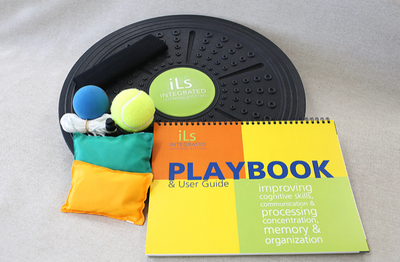
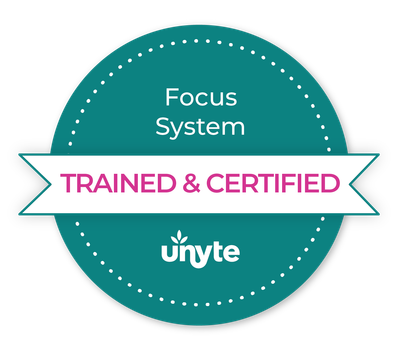
With Focus we combine specially-treated music, bone conduction headphones, and air conduction technology together with physical movement.
This allows Focus to support brain integration and skill-building for anyone. It is wonderful for those with sensory-motor and neurodevelopmental challenges.
Those with concerns such as autism, ADHD, learning difficulties, auditory & sensory processing disorders, brain injury, trauma, sensory sensitivities, sound sensitivities, and more.
Ideal for both children and adults, the Focus System is easily integrated together with other modalities that may be being accessed.
Focus is also easily integrated into daily life.
Ideally iLs Focus is listened to for approximately 3-5 hours per week. Sessions can be done in either 30 minute or one hour increments.
For each full hour of listening, ideally about 15 minutes of special Focus "activities" will be done. These are things such as standing on one leg, tossing a bean bag, playing with a ball, using a balance board, and more.
Over the course of the listening program(s), as brain functioning is improved, the activities will become easier. As this happen the level of challenging with each activity is raised slightly and, as the higher levels are fully mastered, we then move on to new activities.
For the remainder of each hour of listening, both. kids and adults move on to doing other things. For adults this could involve tidying the house, doing yard work, cooking, getting ready for work, going for walks, etc...
For kids this may be different forms of playing. Using fine motor and gross motor skills by doing things such as playing with toys, drawing or colouring, gently bouncing on a mini trampoline, going for a walk, riding a bike, climbing, and more.
iLs Focus includes:
Calming Program
Sensory & Motor Program
Concentration & Attention Program
Reading & Auditory Processing Program
Two Optimal Performance Programs
A Playbook and Integration Kit for movement activities
The process begins with a brief written assessment to determine which of the included Focus programs may be relevant for you or your child.
Programs can be combined and condensed in order to shorten overall timeline.
Pricing
NEW!! Focus has moved to a digital delivery format which now allows me to supervise remote use of Unyte-iLs Focus to people located virtually anywhere.
For those within Canada, I do have a few physical iLs Focus systems on hand so those could be used instead of the app, and no purchase of the activity pack mentioned below, would be necessary.
To receive Focus through the new app - accessible from almost any location - you will also need to purchase an "activity" pack from the Unyte-iLs company for $299 US.
The activity pack includes: an amplifier, bone-conducting headphones, waist pack, balance board, 2 bean bags, 1 racket ball, 1 tethered tennis ball, headband, Playbook, manual and carry bag. You then own the activity pack and, if at some point you no longer have use for it, it can be resold - I will be interested in purchasing some activity packs back from clients myself.
You will use the activity pack together with your own device onto which the Focus app has been downloaded.
Monthly fee (pay as you go): $240 CDN (approx $177 US)
6 month access: $960 (approx $710 US)
12 month access: $1620 (approx $1225 US)
Six and 12 month plans can be broken down into monthly instalments.
Family Discounts:
Additional family members accessing iLs Focus within the same time period are 50% off.
Click here to learn about the differences between SSP, RRP, and iLs
F.A.Q
Answers to frequently asked questions about SSP. If you have a question that is not answered here, please get in touch!
What to Expect
Blog
Real stories. Deep healing. Nervous system care for people and their pets.
Explore new SSP and RRP options, including flexible pricing and support levels to meet your nervous system’s needs. Whether you prefer a fully coregulated process or more independent listening, there’s now a package that fits you - or your child - just right.
Read MoreIn this review of Safe and Sound: A Polyvagal Approach for Connection, Change, and Healing, I explore how the book showcases the power and flexibility of the Safe and Sound Protocol (SSP) through a wide range of real-life case studies. From subtle shifts to dramatic transformations, and from in-person to remote delivery, the stories span diverse client concerns—including trauma, chronic illness, anxiety, dissociation, and more. Whether you’re a provider or someone exploring nervous system healing for yourself, this book offers deep insight into what’s possible when we truly listen to the body.
Read MoreThis inspiring case study explores the profound impact of microdosed SSP on a highly complex teen with dyslexia, school trauma, and PDA. Despite listening to only four minutes of SSP Core, he began writing a trilogy - 300,000 words long so far - alongside remarkable gains in emotional regulation, verbal expression, and creative output.
Read MoreThis article explores the relationship between the Safe and Sound Protocol (SSP) and tinnitus—clearing up common misconceptions, explaining potential risks, and highlighting how thoughtful pacing and expert guidance can make SSP safe - and in some cases, even beneficial for those with tinnitus.
Read MoreIn this podcast interview, I share how I work as a therapist using Somatic Experiencing, Brainspotting, SSP, RRP, and intuition to support deep, lasting change. We explore nervous system healing, provider alignment, polyvagal-informed therapy, and even using SSP with pets.
Read MoreDiscover how the Safe and Sound Protocol (SSP) can support autistic individuals of all ages—not by changing who they are, but by helping them feel safer, more regulated, and more connected. This article explores how SSP can gently reduce sensory overwhelm, improve communication, and foster a powerful positive feedback loop of safety and connection. It also highlights how the Rest & Restore Protocol (RRP) can further support grounding, sleep, and digestion.
Read MoreDiscover how the Safe and Sound Protocol (SSP), sometimes in combination with Somatic Experiencing, Brainspotting, and the new Rest & Restore Protocol (RRP), can support those living with misophonia and misokinesia. Drawing from real-life case examples, this article explores how nervous system regulation can lead to profound shifts—even after years of struggle—and why healing often begins by helping the body feel safe again.
Read MoreNo matter what healing approach you offer, your presence is part of the medicine. This article shares three essential pillars that help any provider build a practice that feels joyful, sustainable, and truly aligned—with support for both your clients and your own nervous system.
Read MoreIn this post, I share the joy of a recent session with a Safe & Sound Protocol provider, where I combined Brainspotting with bite-sized SSP consultation in a deeply intuitive and healing. We were both teary at different points as we witnessed her reclaiming her confidence and more of who she really is. It’s a story about following what resonates, trusting the process, and the quiet magic that happens when healing is supported from the inside out.
Read MoreWorried about “side effects” with SSP? You’re not alone—but what many call side effects are actually signs of a nervous system in motion. In this post, I share why I get excited (not alarmed) by temporary dysregulation, how exquisitely sensitive clients often respond most powerfully, and why titration is the key to success. Whether you’re a provider or a client, this perspective might just shift how you view the process—and the possibilities.
Read MoreA heartfelt personal account of my transformative journey with the Rest & Restore Protocol (RRP). I have experienced many profound improvements. Along the way it was a gradual, almost imperceptible process with some dysregulation along the way. Once processed and settled, that dysregulation lead to even deeper healing.
Read MoreWhat if productivity isn’t about pushing through but about working with your natural rhythm? In this post, I share how a day of following my instincts—repotting plants, building LEGO flowers, and walking my dogs—led to more creativity, inspiration, and progress than forcing myself to work. This shift, influenced by the Rest & Restore Protocol (RRP) and embracing my neurodivergence, has helped me move away from rigid expectations and toward a more compassionate, effective way of working. Read on to see why rest isn’t the opposite of productivity—it’s a key part of it.
Read MoreShop
Koji's Quest Worlds
About Koji's Quest
Contact
- info@sspyoda.com
- Monday - Thursday 10am - 5pm ET
**Please Note** Due to a high volume of enquiries, it may take up to 48 business hours, Monday - Thursday, 10am - 5pm ET to receive a reply.
